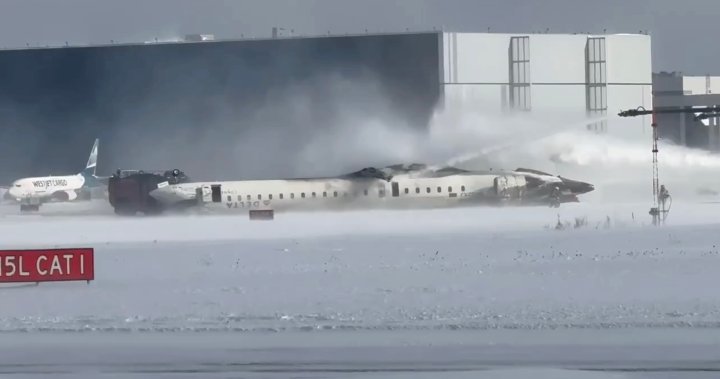Canada
Despite 4 plane crashes in 3 weeks, flying is safe. Here’s why.

Recent Aviation Incidents: Understanding the Safety Concerns
A Worrying Trend in Aviation Safety
In recent weeks, a series of worrying aviation incidents has captured global attention, raising concerns about the safety of air travel. One of the most notable incidents occurred when a Delta Air Lines jet flipped over during landing at Toronto’s Pearson Airport. Miraculously, all 80 passengers and crew survived, with only minor injuries reported. This incident, occurring during harsh weather conditions, marked the fourth major aviation accident in North America within three weeks. Other incidents included a fatal collision between a commercial jet and an Army helicopter near Washington, D.C., killing 67 people, a medical plane crash in Philadelphia that claimed seven lives, and a tragic accident in Alaska involving a single-engine Cessna, resulting in the loss of ten lives. These events have understandably left many questioning the safety of flying.
The Rarity of Fatal Crashes
Despite the alarming headlines, it is important to remember that fatal aviation accidents are exceedingly rare. Data from the National Safety Council underscores this, indicating that the chances of dying in a car accident are significantly higher (1 in 93) compared to the negligible odds of fatal airplane accidents. The U.S. Department of Transportation further corroborates this, highlighting that air travel remains one of the safest modes of transportation. The last fatal crash involving a U.S. airliner prior to recent events occurred in 2009, illustrating the industry’s robust safety record. Globally, while incidents like the fatal crash in South Korea and issues with Boeing’s 737 Max have raised concerns, they remain anomalies in an otherwise safe industry.
Beyond Crashes: Other Safety Concerns
While tragic accidents dominate the headlines, other safety concerns have emerged, contributing to heightened anxiety among travelers. Incidents such as stowaways found dead in plane wheel wells and a passenger opening an emergency exit during taxiing in Boston have highlighted potential vulnerabilities in airport security and passenger behavior. These events, though not resulting in crashes, underscore the multifaceted nature of aviation safety, encompassing not just mechanical and procedural aspects but also human factors and security protocols. Addressing these elements is crucial to maintaining public trust in air travel.
Official Responses and Reassurances
In response to these incidents, U.S. officials have sought to reassure the public while addressing systemic issues. President Donald Trump highlighted the need for modernizing air traffic control systems, acknowledging that current infrastructure may be obsolete and in need of upgrade. Transportation Secretary Sean Duffy emphasized that air travel safety remains paramount, supported by statistics that affirm its safety compared to other modes of transport. Despite these reassurances, concerns persist, particularly regarding staffing challenges in air traffic control, which have been linked to factors like uncompetitive pay, demanding shifts, and stringent retirement policies.
Investigating Causes and Preventing Future Incidents
Investigations into these incidents are ongoing, with the National Transportation Safety Board (NTSB) and Federal Aviation Administration (FAA) leading efforts to determine causes and implement preventive measures. The NTSB, known for its thorough investigations, often provides recommendations to enhance safety, although not all are promptly implemented. This lag in adopting safety measures poses challenges in maintaining the highest safety standards. The complexity of these investigations, which can take over a year to complete, underscores the need for patience and the importance of learning from past incidents.
Balancing Concerns with Reality
While recent events have understandably unsettled travelers, it is crucial to balance these concerns with the broader context of aviation safety. The rarity of fatal crashes and continuous improvements in safety measures offer reassurance. However, vigilance is essential to address evolving challenges and maintain the trust of the flying public. By acknowledging the concerns and engaging in open dialogue, the aviation industry can continue to uphold its commitment to safety, ensuring that air travel remains the safe and efficient mode of transportation it is known to be.











